
Hang gliding is an air sport or recreational activity in which a pilot flies a light, non-motorised, fixed-wing heavier-than-air aircraft called a hang glider. Most modern hang gliders are made of an aluminium alloy or composite frame covered with synthetic sailcloth to form a wing. Typically the pilot is in a harness suspended from the airframe, and controls the aircraft by shifting body weight in opposition to a control frame.

The Robert J. Collier Trophy is awarded annually for the greatest achievement in aeronautics or astronautics in America, with respect to improving the performance, efficiency, and safety of air or space vehicles, the value of which has been thoroughly demonstrated by actual use during the preceding year.
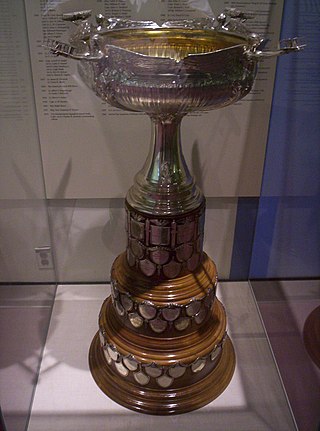
The Mackay Trophy is awarded yearly by the United States Air Force for the "most meritorious flight of the year" by an Air Force person, persons, or organization. The trophy is housed in the Smithsonian Institution's National Air and Space Museum. The award is administered by the U.S. National Aeronautic Association.

Richard Glenn Rutan was an American military aviator and officer, as well as a record-breaking test pilot who in 1986 piloted the Voyager aircraft on the first non-stop, non-refueled around-the-world flight with co-pilot Jeana Yeager. He was the older brother of famed aerospace designer Burt Rutan, whose many earlier original designs Dick piloted on class record-breaking flights, including Voyager.

The World Air Sports Federation is the world governing body for air sports, and also stewards definitions regarding human spaceflight. It was founded on 14 October 1905, and is headquartered in Lausanne, Switzerland. It maintains world records for aeronautical activities, including ballooning, aeromodeling, and unmanned aerial vehicles (drones), as well as flights into space.

Paul Beattie MacCready Jr. was an American aeronautical engineer. He was the founder of AeroVironment and the designer of the human-powered aircraft that won the first Kremer prize. He devoted his life to developing more efficient transportation vehicles that could "do more with less".
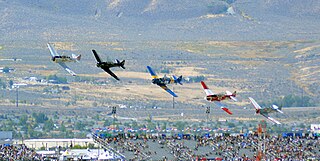
The term "air sports" covers a range of aerial activities, including air racing, aerobatics, aeromodelling, hang gliding, human-powered aircraft, parachuting, paragliding, soaring, and skydiving.

The International Gliding Commission (IGC) is the international governing body for the sport of gliding. It is governed by meetings of delegates from national gliding associations.

Paul F. Bikle was director of the U.S. National Aeronautics and Space Administration (NASA) Dryden Flight Research Facility from 1959 until 1971, and author of more than 40 technical publications. He was associated with major aeronautical research programs including the hypersonic X-15 rocket plane, and was a world record-setting glider pilot.
Ann Courtenay Welch OBE, née Edmonds, was a pilot who received the Gold Air Medal from Fédération Aéronautique Internationale (FAI) for her contributions to the development of four air sports - gliding, hang gliding, paragliding and microlight flying. She flew as a ferry pilot in the Air Transport Auxiliary during the Second World War.

William Charles Schneider was an American aerospace engineer. He served in the United States Naval Reserve 1942–1946 as an Aviation Machinist's Mate, 1st Class Petty Officer. He joined NASA in June 1963 and served as the Gemini mission director for seven of the ten piloted Gemini missions. From 1967 to 1968, he served as Apollo mission director and the Apollo program's deputy director for missions. He then served from 1968 to 1974 as the Skylab program's director. From 1974 to 1978, he worked as the Deputy Associate Administrator for Space Transportation Systems. From 1978 to 1980, he served as the Associate Administrator for Space Tracking and Data systems. He received a Ph.D. in engineering from Catholic University of America.

Richard P. Hallion is Senior Adviser for Air and Space Issues, Directorate for Security, Counterintelligence and Special Programs Oversight, the Pentagon, Washington, D.C. He is responsible for analysis and insight regarding the conceptualization, evolution and utilization of sensitive national technological programs and related subject areas.
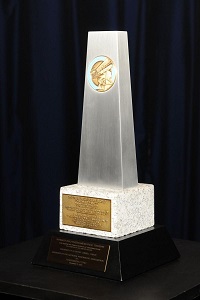
The Wright Brothers Memorial Trophy was established by the National Aeronautic Association (NAA) in 1948 after a trust fund was created in 1936 by Godfrey Lowell Cabot of Boston, a former president of the NAA. It is awarded to a living American for "significant public service of enduring value to aviation in the United States." The presentation of the award is made annually at the Aero Club of Washington, as close as possible to December 17 each year, the day on which, in 1903, the Wright brothers made the first flight in an airplane. The inaugural recipient of the trophy was William F. Durand, "a pioneer in aeronautics, naval propulsion and engineering research methods". Until 2010, winners of the award received a trophy depicting the Wright brothers' Wright Flyer aircraft. From 2010 onwards, a redesigned trophy featuring a silver obelisk and bronze inscription has been awarded.
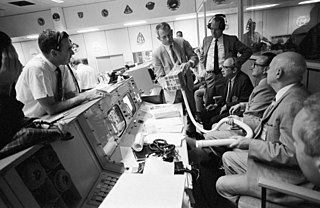
Aerospace engineering is the primary field of engineering concerned with the development of aircraft and spacecraft. It has two major and overlapping branches: aeronautical engineering and astronautical engineering. Avionics engineering is similar, but deals with the electronics side of aerospace engineering.

Walter J. Boyne was a United States Air Force officer, Command Pilot, combat veteran, aviation historian, and author of more than 50 books and over 1,000 magazine articles. He was a director of the National Air and Space Museum of the Smithsonian Institution and a Chairman of the National Aeronautic Association.
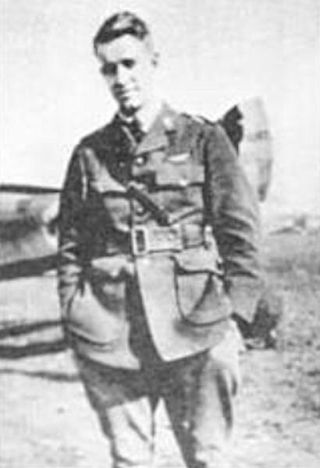
Edward Peck "Ted" Curtis was an American World War I flying ace with six aerial victories. Between the world wars, he served as vice president of Eastman Kodak's international division. In World War II he served as the Chief of Staff, U. S. Strategic Air Force in Europe earning the rank of major general. As Special Assistant to President Eisenhower for Aviation Facilities Planning, he earned the 1957 Robert J. Collier Trophy.

Ernest Wise Keyser (1876-1959) was an American sculptor born in Baltimore, Maryland on December 10, 1876. He studied at the Maryland Institute College of Art in Baltimore and at the Art Students League in New York City and at the Académie Julian and with Denys Puech in Paris.

The United States capital, Washington, D.C., has been the site of several events in the nation's history of aviation, beginning from the time of the American Civil War, often for the purpose of promoting the adoption of new aeronautical technologies by the government. It has also been home to several governmental and civilian aircraft manufacturers and aviation organizations, and several aerospace contractors.
The Robert J. Collier Trophy is owned and administered by the National Aeronautic Association and is awarded annually "for the greatest achievement in aeronautics or astronautics in America, with respect to improving the performance, efficiency, and safety of air or space vehicles, the value of which has been thoroughly demonstrated by actual use during the preceding year."

















